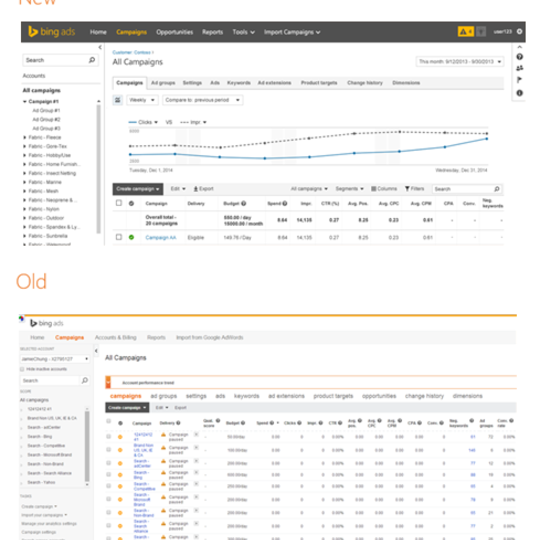Bing Ads 2014 Recap
In the past year, Bing has added features like product ads, auto-tagging and online insertion orders to make it easier to advertise on the network.
In the past year, Bing has added features like product ads, auto-tagging and online insertion orders to make it easier to advertise on the network.
A lot has happened at Bing Ads since our last recap. David Pann, general manager for Bing Ads at Microsoft, reports that clicks are up 30 percent in the past year and mobile clicks are up 133 percent. In addition, Bing has expanded into 35 markets across the world, most recently developing a presence in Brazil, Australia, New Zealand, Taiwan, Hong Kong, Thailand, Vietnam, the Philippines, Malaysia, Indonesia and Singapore.
Adding Search Scale All Over the Place
The volume of searches available on Bing is the number one issue advertisers have had with the platform. But the search engine just celebrated its 5th birthday and is still growing in so many ways. Recently, Bing began adding scale and pedigree at the same time.
To wit: Apple announced in June that Bing would be included in its new version of Spotlight on the Mac OS and iOS. Apple’s Siri already uses Bing for search, as does Amazon’s new Fire phone. And, naturally, Bing gets in on Windows Phones, as well as other Microsoft products like Xbox, Windows 8.1 and Cortana, the personal assistant for Windows phones.
Cortana deserves its own mention because Bing search is growing up fast here, learning to be supportive. Advances in technology will undoubtedly influence search for years to come.
So what’s in it for you, the advertiser?
These are impressive developments, but what search advertisers really want to know is: “What are you doing to make it easier for me to advertise on your network?”
That’s why we’re reviewing some of the top feature developments at Bing Ads over the last year that have delivered marked improvements for advertisers.
TOP CHANGES WITH BING ADS
Some of our top feature developments include:
LITTLE THINGS ADD UP
Some of the other 100+ feature updates and changes are small but significant. It’s like removing a tiny pebble from your shoe. How can something so small cause so much irritation? Bing is focused on getting rid of those pebbles.
Some of these pebbles include:

Elimination of Keyword Normalization Errors
In addition to these big and small feature changes, Bing now allows keywords with extraneous characters, including those that differ by an accent mark, such as “café” and “cafe.” Once upon a time, Bing Ads did not allow the ability to submit variants of a keyword with extraneous characters — for example, “bike shed” and “bike-shed.” This resulted in requests for tools to create workflows that determined how keywords would be normalized before uploading them to Bing Ads. And now they’re here.
Accounts Managed by Multiple Users
Bing has also revamped its policies for accounts managed by multiple users because many advertisers are managed by agencies, which often means multiple people not only manage an account, but have different abilities to view or make changes. Bing took care to address the top pain points around multiple users accessing an account. Bing also added improved diagnostics on why campaigns are not performing.
Trying to figure out why your ads are not getting enough impressions and/or clicks can be like trying to find a needle in a haystack — especially if you don’t have ample tools to tell you where to look. Bing recently added new delivery statuses related to low search volumes and low bids to make it easier to identify why campaigns in those situations aren’t getting clicks and to save you time. This includes a notification for bids “below first page.”
And, finally, advertisers on Bing can now exclude plurals from exact match keywords because sometimes the plural of a word and the singular could have totally different user intent.
ON THE HORIZON
And while there have been many changes and new things in the past year at Bing Ads, here’s what’s coming in the next several months:
AND THAT’S NOT EVEN EVERYTHING
Check in with the Bing Ads Blog to stay up-to-date on feature changes and improvements as they come.